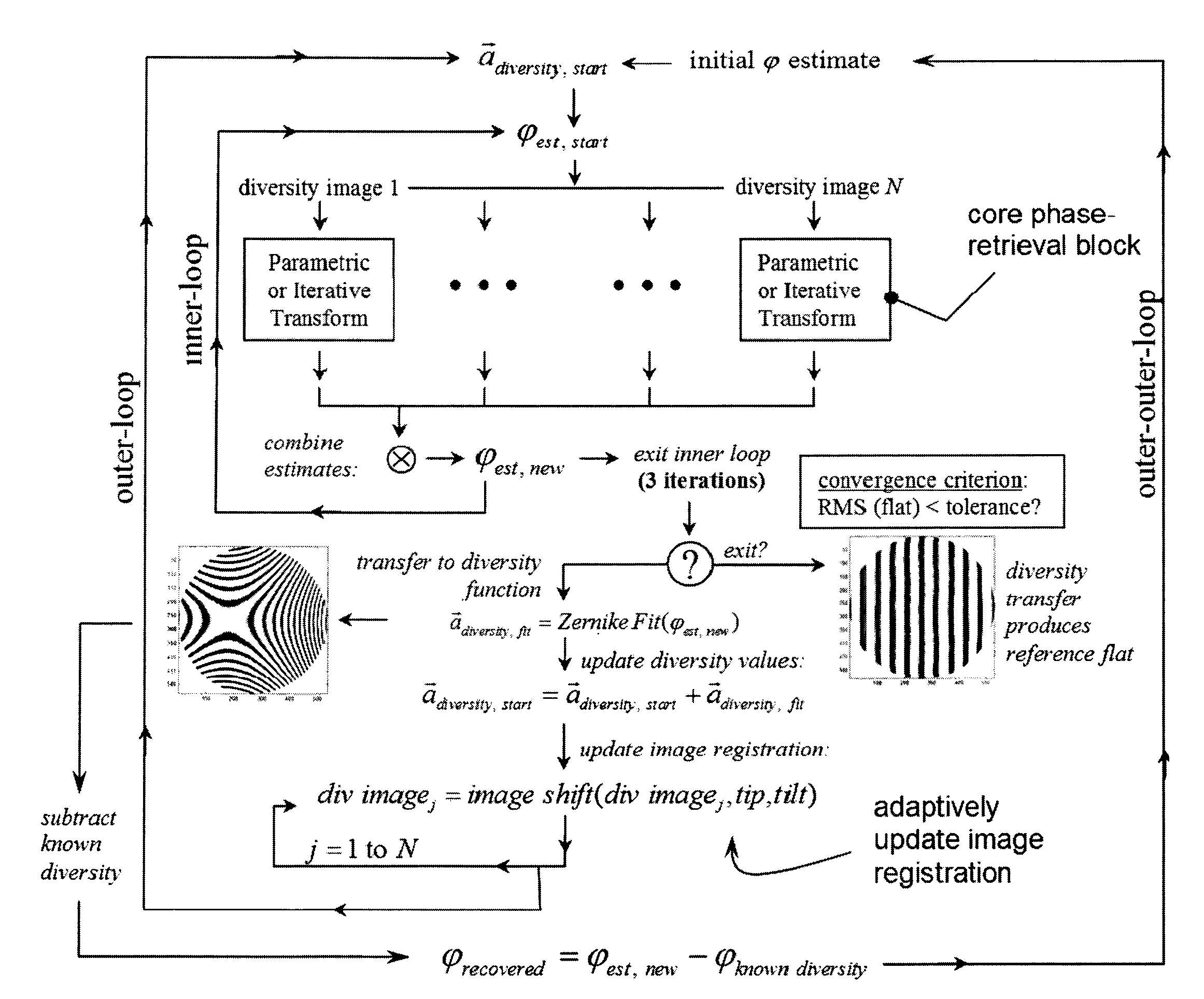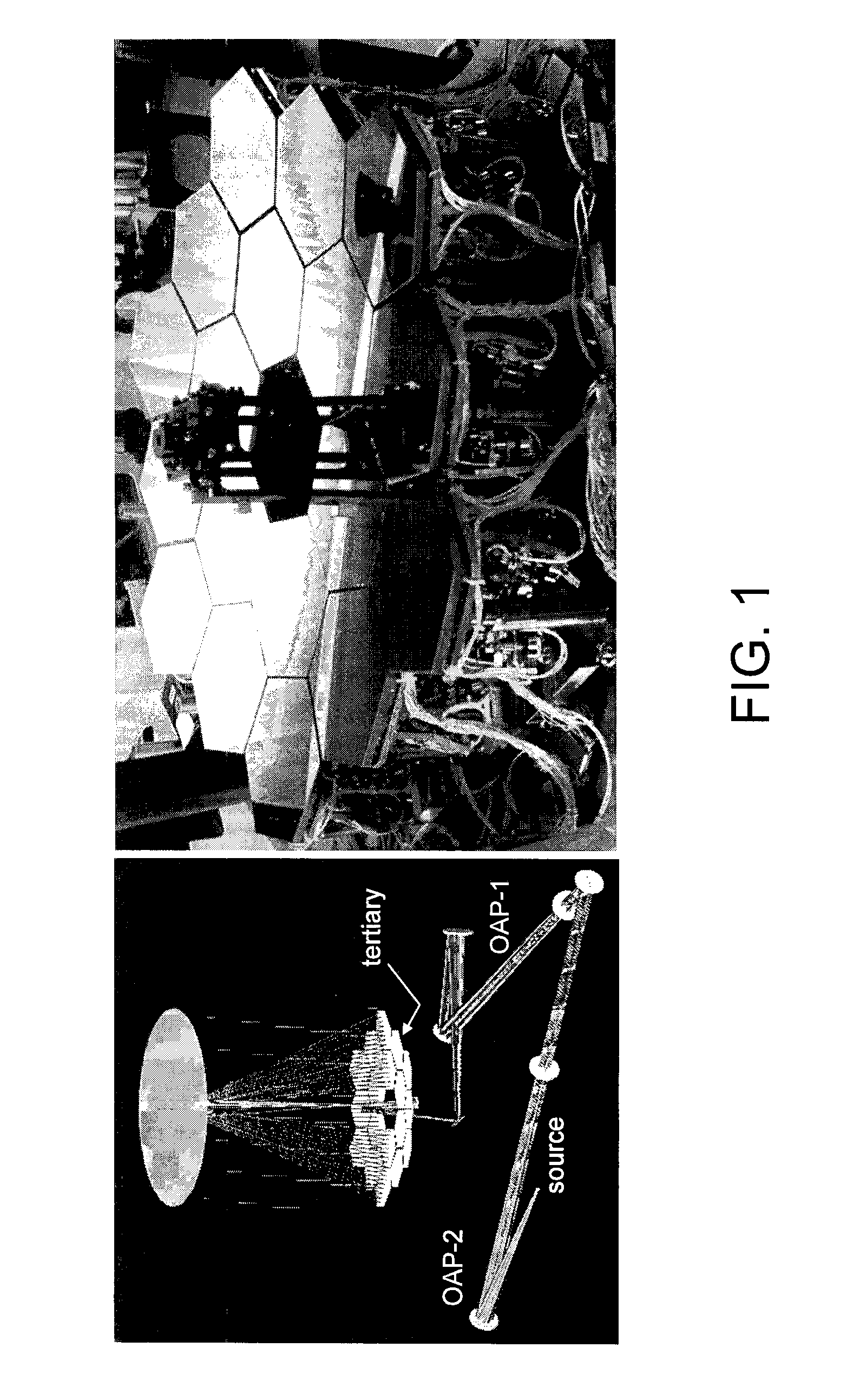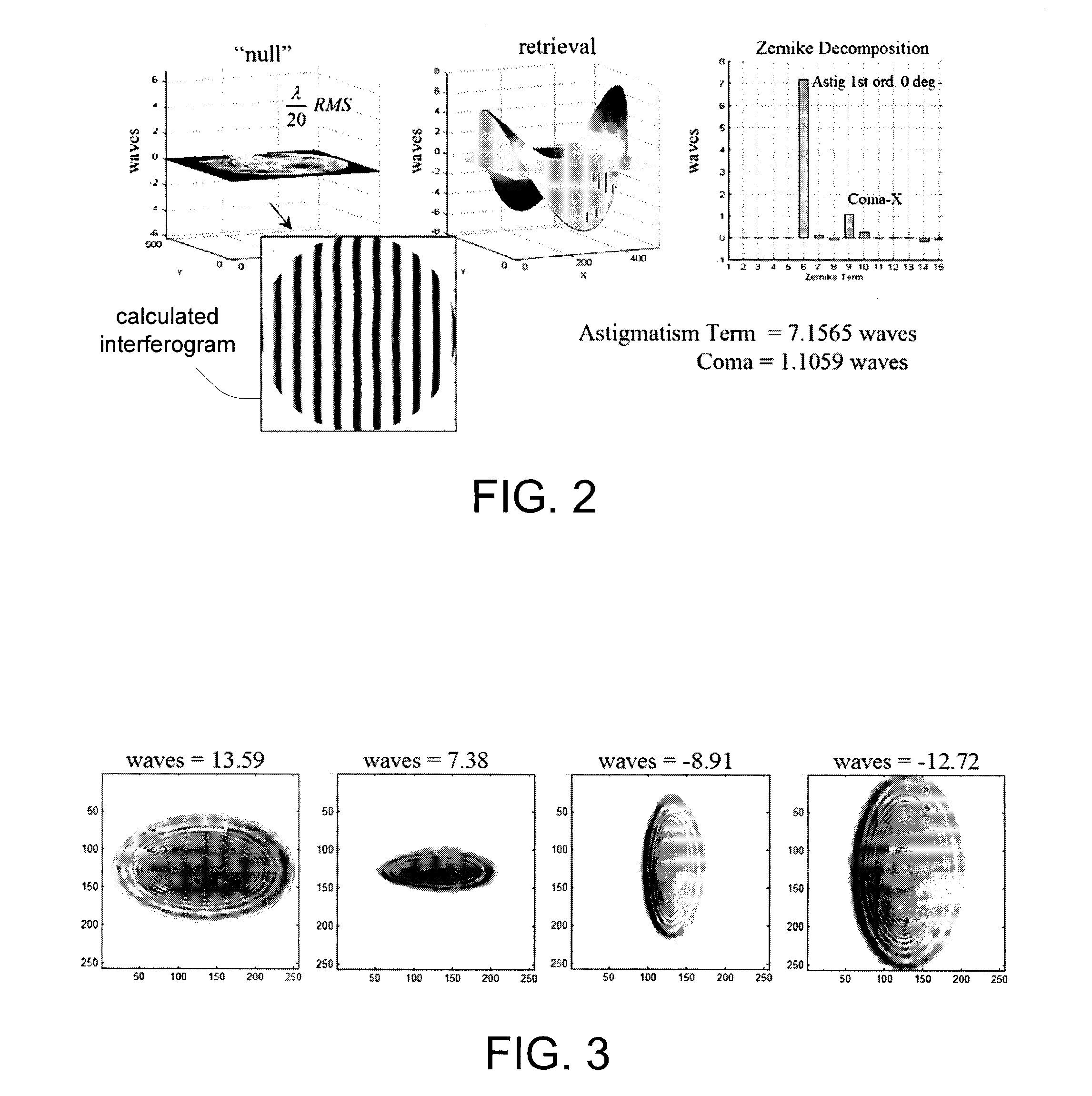Hybrid diversity method utilizing adaptive diversity function for recovering unknown aberrations in an optical system
a diversity function and hybrid technology, applied in the field of optical systems, can solve the problems of spurious phase values and branch points, iterative transformation methods, and limited dynamic range of recovery results
- Summary
- Abstract
- Description
- Claims
- Application Information
AI Technical Summary
Benefits of technology
Problems solved by technology
Method used
Image
Examples
Embodiment Construction
[0009]Particular embodiments of the method of the present invention are presented. It should be understood that the invention, in its broadest sense, could be practiced without having one or more features of these embodiments. It should also be understood that these embodiments are merely exemplary.
[0010]In one embodiment, the invention provides a method of recovering unknown aberrations in an optical system, comprising collecting intensity data produced by the optical system, generating an initial estimate of a phase of the optical system, iteratively performing a phase retrieval on the intensity data to generate a phase estimate using an initial diversity function corresponding to the intensity data, generating a phase map from the phase retrieval phase estimate, decomposing the phase map to generate a decomposition vector, generating an updated diversity function by combining the initial diversity function with the decomposition vector, generating an updated estimate of the phase...
PUM
 Login to View More
Login to View More Abstract
Description
Claims
Application Information
 Login to View More
Login to View More - R&D
- Intellectual Property
- Life Sciences
- Materials
- Tech Scout
- Unparalleled Data Quality
- Higher Quality Content
- 60% Fewer Hallucinations
Browse by: Latest US Patents, China's latest patents, Technical Efficacy Thesaurus, Application Domain, Technology Topic, Popular Technical Reports.
© 2025 PatSnap. All rights reserved.Legal|Privacy policy|Modern Slavery Act Transparency Statement|Sitemap|About US| Contact US: help@patsnap.com



